
Post Offices in towns and villages, mid-20th century
Background to the recollections
As a young child, I lived in Edgware which had been built in the 1930s as part of London's suburbia, and it was therefore considered quite modern in the 1940s when I first knew it. The post office was no exception, and I think it was probably the largest shop in the town - not that we ever referred to it as a shop. It was just 'the post office'. It had a rather dreary grey-looking outside, and although I can't remember the type of windows, I do remember that one could easily see what was going on from outside.
Post office sales
There were probably six or so cashiers and they were all busy, although the queue never seemed to be more than three persons deep. My mother generally went for postage stamps, postal orders and to pay in savings. Postal orders were papers that could be sent through the post and were redeemable at the local post office of recipients.
The Post Office also did good business cashing pension vouchers, receiving parcels for mailing, and accepting telegrams.
Inside a post office
Our local Post Office in Glasgow had a long counter-top with a mesh or glass barrier for much of its length, restricting the area for the staff to interact with customers.
In addition to the general work of the post office, cigarettes were available from a machine in the doorway. A packet of ten cost six pennies and a packet of 20 cost as shilling. This was in 1940-45, i.e. during the Second World War. It was felt important for morale that cigarettes remained easily available in spite of the rationing and shortages of most commodities.
Douglas Adam
Savings bought from the Post Office
Mymother saved for me in a personal Post Office National Savings book. The amount saved was written onto a line of the book, each page containing about 12 ruled lines. Then it was initialled and stamped with the particular post offices ink stamp.
There was also savings stamps.
Savings stamps
Savings stamps could be bought in the Post Office and at school and then stuck into a book. When they reached 15 shillings they were exchanged for 1 savings certificate, redeemable for 1 pound after 7 years. This was in 1940-45, i.e. during the Second World War.
Douglas Adam
The town sorting office
Our local sorting office, which was a brick-built building with no obvious windows, was in a back street. There was no mechanisation: every piece of mail had to be scrutinised and sorted by hand. Mail was delivered from our local sorting office and there were two deliveries every weekday and one on Saturday mornings. There was no Sunday delivery.
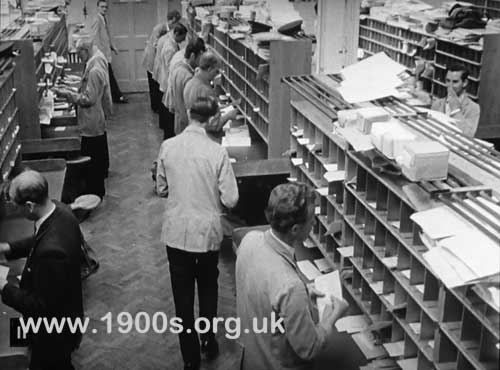
A typical town or city sorting office. Screen shot from an old film.
Village post offices
Although I never saw a village post office as a child I understand that they were small, sometimes small cottages and often built into larger houses. Their way of working had probably changed little from the early 20th century.
Village post offices tended to sell general provisions as well.
The village post mistress was well known in a village, and suitably greeted by the villagers if they happened to meet her in the street.
In contrast, in towns, some of the cashiers were probably recognised by some people, but it would have been out of place to greet them.
The mail was sorted in a back room or a back shed or such like.
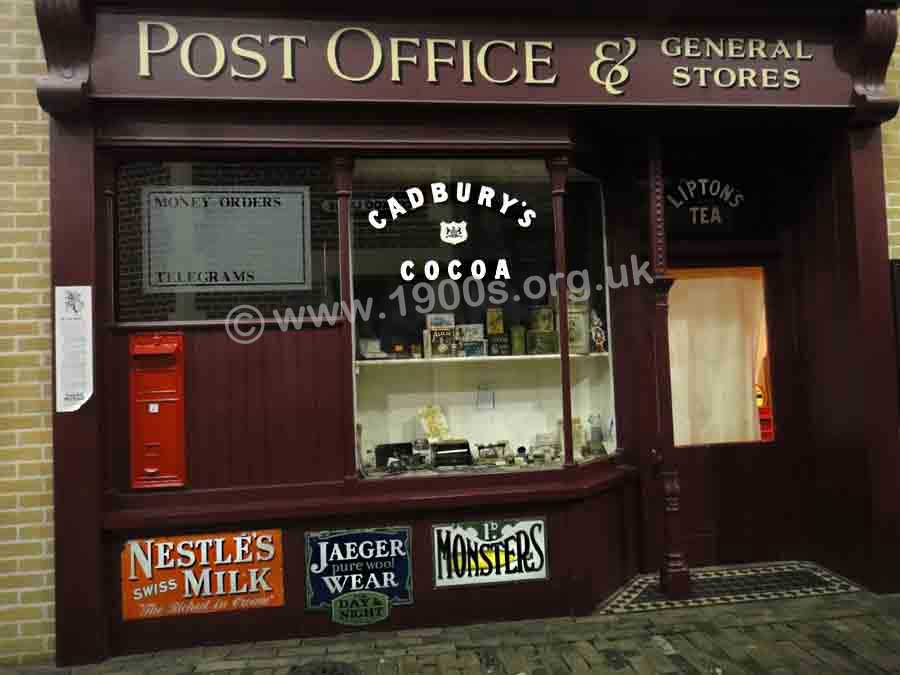
Small post office, also selling provisions. Photographed in Milestones.
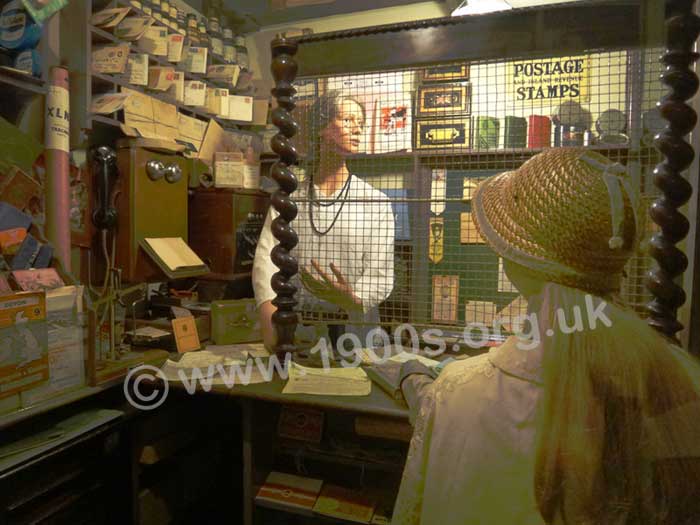
The village post mistress (model) photographed at Eastbourne Museum of shops.
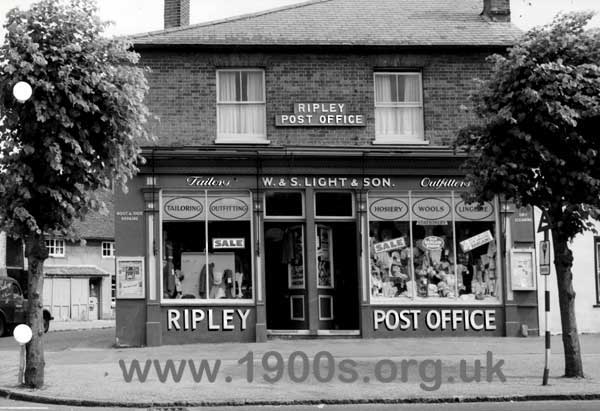
Small post office, also clothing and incidentals. Photograph courtesy of Send and Ripley History Society.
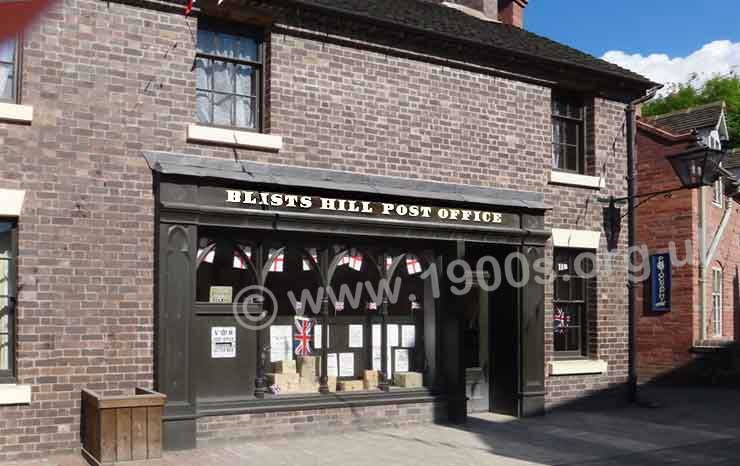
Post office built into housing. Photographed at Blists.
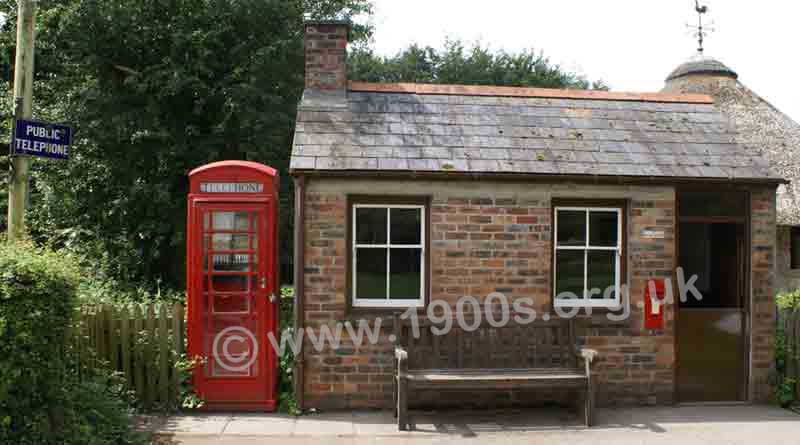
Small village post office photographed at St Fagans. Note the red telephone box.
If you can add anything to this page or provide a photo, I would be pleased if you would contact me.
sources: early 20th century material
sources: ww2 home front and other material
contact
the webmaster/author/researcher/editor
privacy policy
















